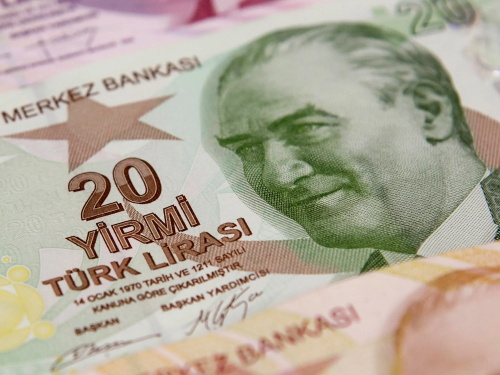Turkish Lira Crisis 3.0: Contagion Risk to European Banks

The Turkish economy has once again reached the edge of a cliff. This time, the turmoil extends beyond domestic financial markets, raising a broader concern: the risk exposure of European banks is being affected by the lira’s collapse and Turkey’s economic imbalances.
Crisis Eruption: Market Panic Is Just the Surface
In March 2025, Turkey’s financial markets suffered a major blow. The benchmark stock index plummeted, triggering circuit breakers; the lira hit new lows against the U.S. dollar; and 10-year government bond yields surged nearly 30%. While this appeared to be a short-term panic, it was in fact rooted in deep structural issues that had been accumulating for years.
Turkey’s economy is heavily reliant on foreign capital inflows and debt-driven growth. During periods of global monetary easing, this model could sustain a facade of prosperity. However, once external conditions shift, Turkey’s fragile foundation quickly becomes unsustainable.
The Cost of “Unorthodox” Policies
The roots of the crisis trace back to 2021. Despite inflation soaring close to 80%, the Turkish central bank, under President Erdoğan’s direction, took a contrarian path—cutting interest rates repeatedly, from 19% down to 8.5%. Driven by his belief that high interest rates are the root cause of economic problems, Erdoğan pursued a policy of aggressive rate cuts in an effort to stimulate borrowing, consumer spending, and investment.
The outcome was predictable: investor confidence plummeted, capital fled rapidly, and the lira depreciated dramatically—from 7.4 to the dollar in early 2021 to 37 by early 2025, wiping out more than 60% of its value in four years. Meanwhile, frequent central bank leadership changes and a loss of independence further undermined policy credibility.
By 2023, Turkey’s foreign exchange reserves had dwindled to just $60 billion, far from enough to meet external debt payments or stabilize the currency. In March 2025 alone, $12 billion in foreign capital fled the country—a record monthly outflow.
Structural Imbalance and Social Cost
The Turkish economy leans heavily on a narrow base, with construction and tourism serving as its primary growth engines. The former accounts for 20% of GDP, while the latter is a primary source of foreign currency. However, both sectors have suffered since the prolonged Syrian conflict and the devastating earthquake of 2023, with revenues falling by around 20%.
The economic turmoil has severely impacted everyday life. As of 2025, the purchasing power of the minimum wage has fallen by 58% compared to five years ago, bread prices are up 210% year-on-year, and the poverty rate has surpassed 30%. Turkey has become a textbook case of an “economic fault line” in emerging markets, where even minor shocks can trigger severe instability.
Debt Avalanche Rolling Toward European Banks
As of the end of 2024, Turkey’s external debt stood at $450 billion—62% of GDP—with more than 40% of it maturing in the short term. In a global environment of rising U.S. interest rates, refinancing this debt has become increasingly difficult. Simultaneously, the continued depreciation of the lira has pushed up the cost of importing energy and raw materials, with energy import spending up 35% year-on-year in 2024, and core inflation remaining above 55%.
Even more worrying, this currency and debt crisis is no longer confined to Turkey’s borders. The European Central Bank has publicly voiced concerns over eurozone banks’ risk exposures, particularly those that have lent heavily to Turkey—such as Spain’s BBVA, Italy’s UniCredit, and France’s BNP Paribas.
According to data from ABN AMRO, European banks have extended a total of €143 billion in loans to Turkey, with Spanish and Italian banks being the most exposed. Turkish corporates also hold significant amounts of foreign currency debt. If the lira continues to slide or the economy deteriorates further, a wave of defaults appears inevitable—directly threatening the asset quality of European banks.
A significant portion of Turkey’s banking sector—about 40% of total assets—is tied to loans issued in foreign currencies. Under the triple pressure of currency depreciation, dwindling reserves, and a credibility crisis at the central bank, the resilience of Turkey’s banking system remains deeply uncertain.
A Systemic Warning for Emerging Markets
Turkey’s “Lira Crisis 3.0” is not an isolated incident—it serves as a stark warning for all emerging markets. Over-reliance on external debt, sacrificing monetary policy independence, and neglecting structural reforms are short-sighted practices that can easily evolve into systemic crises. And once such a crisis erupts, its impact can spread well beyond national borders, affecting entire regions and the global financial system.
At this moment, European banks are not just facing abstract market volatility, but real and tangible risks: balance sheet losses and credit defaults. For Turkey, the real challenge has only just begun—how to find a truly sustainable path forward in the face of lost external financing, an uncontrollable currency crisis, and eroding public trust.



